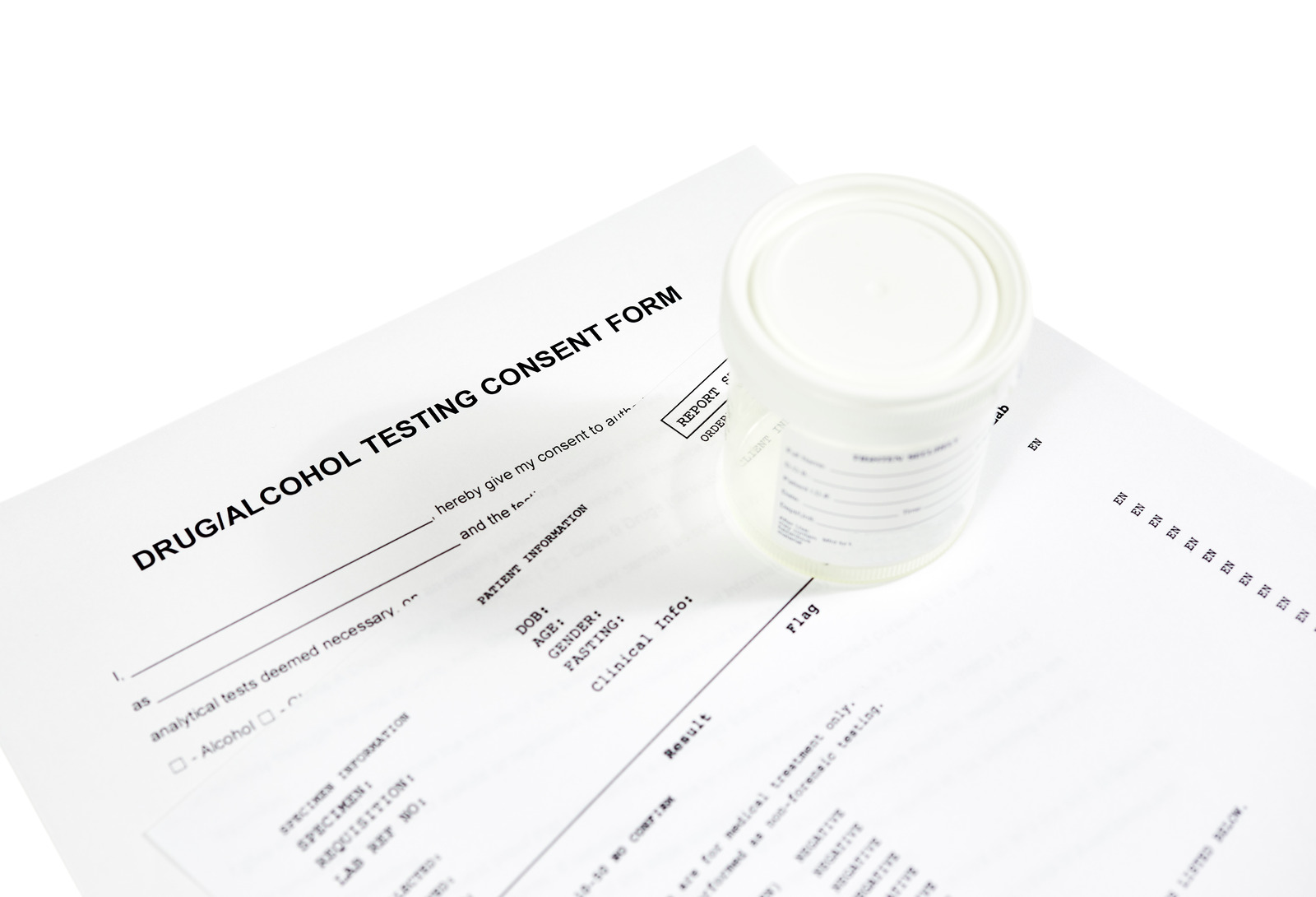Drug testing is often used as part of the hiring process to give employers the information they need to make a hiring decision. It’s also used in the legal process, professional sports, and other situations.
If you have to take a drug test or are relying on drug test results, it’s important to know how long you may expect to wait. Learn more about turnaround times for different types of drug tests, how long it may take to get results, and other vital information for pre-employment drug screening.
What Are Drug Tests?
A drug test looks for signs of one or more illicit or prescription drugs in a sample of urine, blood, saliva, hair, or sweat. The purpose of a drug test is to determine drug use and misuse, such as misusing prescription medications or using illegal drugs like cocaine or heroin.
Drug tests can check for a single drug or a group of drugs, including:[1]
- Alcohol
- Amphetamines
- Barbiturates
- Benzodiazepines
- Marijuana
- Cocaine
- Steroids
- Phencyclidine (PCP)
- Opioids and opiates like heroin or morphine
Typically, pre-employment drug screenings use urine samples, which can provide results within hours to several days after the test.
What Are Drug Tests Used For?
Drug testing is used to find out whether someone is using or misusing one or more drugs. It can’t identify an addiction, but it can identify drug use or misuse. Drug tests may be used for:
- Employment screening: Employers may use drug testing to know if you’re using drugs before hiring or after an on-the-job accident.
- Sports: Professional and collegiate athletes may be tested for drugs that are used to improve performance, like steroids.
- Drug treatment: Drug testing may be used to monitor treatment in programs for drug or alcohol addiction.
- Legal: Drug testing may be part of a criminal or car accident investigation. Drug screening may also be used as evidence for a court case.
- Medical monitoring: Drug testing may be used by doctors to monitor the use of an addictive drug that’s prescribed.
How Long Do Drug Tests Take to Get Results?

The results of a drug test can vary by the type of test, the provider, and more. Here are some general turnaround times based on the type of drug test:
Basic Urine Tests
Urine drug tests check for at least five of the most commonly used drugs: amphetamines, marijuana, cocaine, opiates, and PCP. These screenings are known as a 5-panel urine test and are common for pre-employment screening. They’re also recommended by the Department of Transportation (DOT) and other federal agencies.
A urine test generally offers the fastest turnaround times.[2] Negative results will typically be available one or two days after the testing lab receives the specimen. If more testing is necessary, it may take an extra day. Positive results can take four to six days.
Expanded Urine Tests
Expanded urine tests check for a wider variety of drug types than a basic urine test. Testing for more drugs naturally takes longer, so it may add a day or two to the process. Complex urine test panels can take two or three business days for negative results and four to six business days for non-negative and positive results.
Hair Tests
Hair tests can detect the same drugs as urine tests, but they have the advantage of detecting drug use longer than urine tests. When the body metabolizes drugs, it’s filtered from the blood and excreted. These metabolized substances are deposited in the hair and stay until it’s cut, which means drugs may be detectable for several months after last use.
A hair test can deliver results about one to two days longer than a urine test.[3] Negative results are available in two or three days, while positive test results can take up to a week.
Blood Drug Tests
Blood drug tests may be used in situations where urine or other types of tests aren’t ideal, such as by the police when someone is actively under the influence of a drug. Blood analysis offers a brief detection window because drugs are rapidly metabolized and eliminated. Drugs in the blood are typically detectable within minutes to hours, depending on the drug.[4]
Saliva Drug Tests
Though less common, saliva drug tests offer a simple drug testing method that reduces the risk of specimen contamination. Saliva drug tests can check for a broad range of drugs and deliver negative results within 24 to 36 hours after specimens are received.[5] Positive test results may be available within an additional three days.
Instant Drug Tests
Some testing centers offer instant drug tests, which check for a basic list of drugs in urine and deliver “instant” results. This means negative results return the same day, usually an hour after the collection. However, positive results will not be reported on the same day because they need to be verified. It can take an additional four to six days for a final, definitive result.
At-Home Drug Tests
At-home tests are available to test for drugs in the privacy of your own home, which parents or family members may use. These tests offer rapid results, but a follow-up lab test must verify positive results to confirm accuracy.
What Affects the Test Result Timeline?
Several factors can impact the speed of drug test results. Here are some things that may affect the timeline:
- Drug testing method: The common testing method is the urine test, which has the fastest turnaround times. Hair testing has the longest detection window but some of the longest turnaround times.
- Types of drugs: Drug testing generally takes the same amount of time for all commonly tested drugs, but testing for drugs outside of the usual drug panel can take a little longer because of the extra screenings involved.
- Location: Tests must be sent to a label, and it takes time to ship and assess so that the location can affect the results. Sending a sample farther away may add to the turnaround time, but larger labs may process samples more efficiently.
- Testing protocols: The initial testing panel screens samples to rule out those without evidence of a drug, so negative results are available much faster than positive ones. Any test that may have positive results goes through other rounds of testing to determine if the results are accurate and how much of the drug is present in the sample.
Drug Detection Windows Based on the Type of Drug Test
Drugs are detectable for different periods based on type of drug tests:[6]
- Alcohol is detectable for 10-12 hours in urine and up to 24 hours in saliva.
- Amphetamines are detectable for 2-4 days in urine, up to 90 days in hair, and 1-48 hours in saliva.
- Methamphetamine is detectable for up to 2-5 days in urine, up to 90 days in hair, and 1-28 hours in saliva.
- Barbiturates are detectable for up to 7 days in urine and up to 90 days in hair.
- Benzodiazepines are detectable for up to 7 days in urine and up to 90 days in hair.
- Marijuana is detectable for 1-30 days in urine, up to 90 days in hair, and up to 24 hours in saliva.
- Cocaine is detectable for 1-8 days in urine, up to 90 days in hair, and 1-36 hours in saliva.
- Codeine is detectable for 2-4 days in urine, up to 90 days in hair, and 1-36 hours in saliva.
- Morphine is detectable for 2-5 days in urine, up to 90 days in hair, and 1-36 hours in saliva.
- Heroin is detectable for 2-3 days in urine, up to 90 days in hair, and 1-36 hours in saliva.
- PCP is detectable for 5-6 days in urine and up to 90 days in hair.
These are general detection windows. Several factors can affect how long a drug is detectable, including the drug itself, how much is used and for how long, the individual’s body mass and chemistry, the sensitivity of the drug test, and other factors.
Interpreting Test Results
If a drug test is negative, it can mean that either the drugs tested for were not found in the sample or a very small amount of drugs were found, but it wasn’t enough to produce a positive test result.
If a drug test is positive, it means that one or more drugs were found in the amounts that suggest drug abuse. Positive tests require follow-up testing because they could be false positives, and a follow-up test ensures accuracy.
Be Patient with Test Results
Waiting on the results of a drug test can be nerve-wracking for the person being tested and inconvenient for those conducting the test. However, fast turnaround times don’t mean a test is accurate, so be patient with the results and trust the accuracy.

